The methodologies for curation need to be concern about the main elements is include with processes and products, and the expansion of points is explorating and processing.
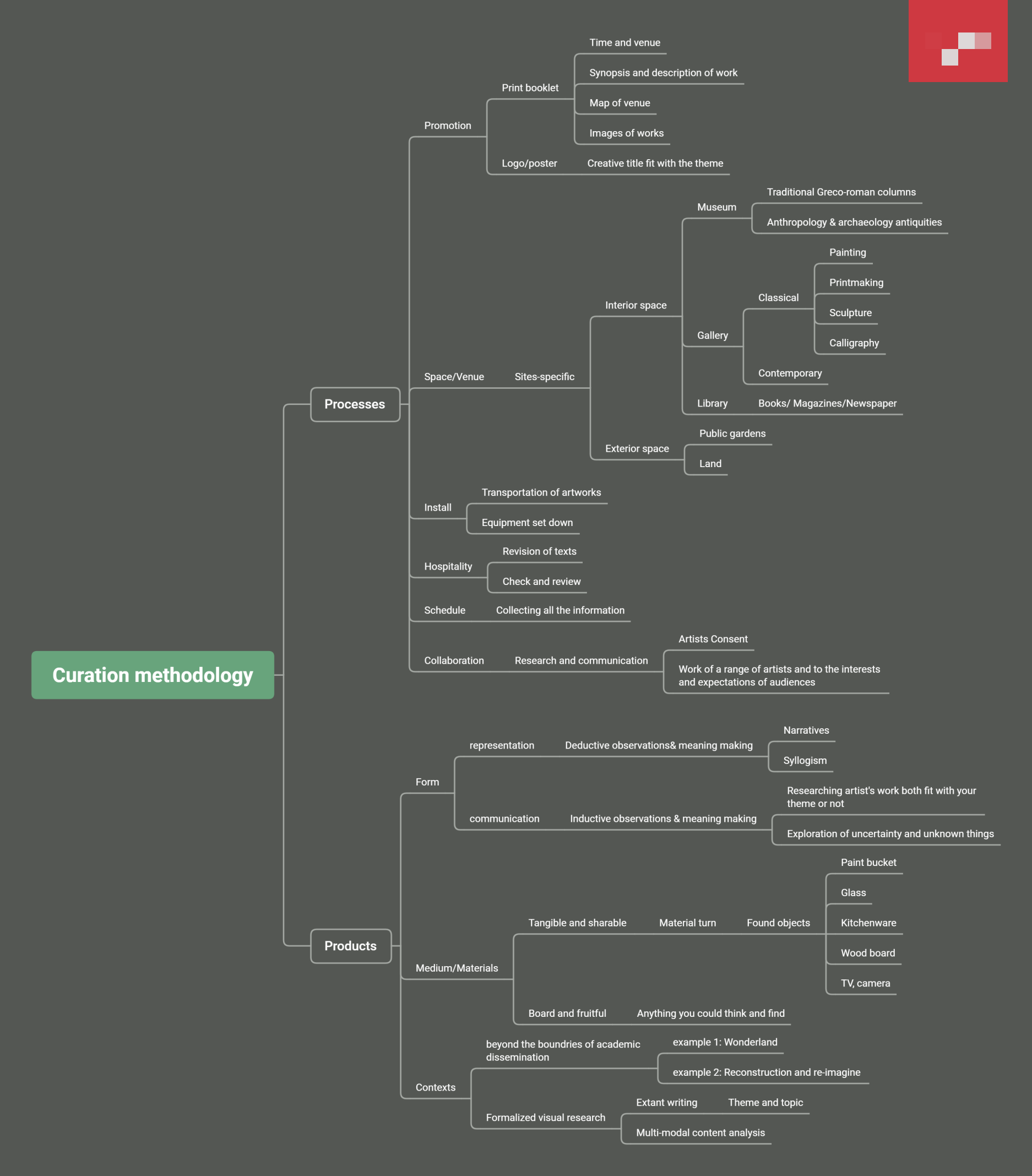
Reflective Questions:
Any critical reflection on the curatorial methods and artistic methods in your show?
How are you doing this and why, how do your artists do what they do and what is the significance of this?
The reasons why I am using the method are by making publications. I am interested in to explore for new forms and new concepts for curating projects, and what the transformation looks like for future curations. I completed a presentation about environmental protection when I was an undergraduate student. The form of this environmental project and the inclusion of methods attracted me at that time.
The link to ‘drinkable book’: https://www.youtube.com/watch?v=qYTif9F188E&t=9s
According to Unicef, in 2015 there were 663 million people using unsafe drinking water. Each page of the ‘drinkable book’, costing just pennies to make, is coated with silver nanoparticles that, when used to filter water, can trap a reported 99.99% of the bacteria found in cholera, E. coli, and typhoid. One book is said to give 5,000 liters (up to four years) of clean drinking water for a single person.
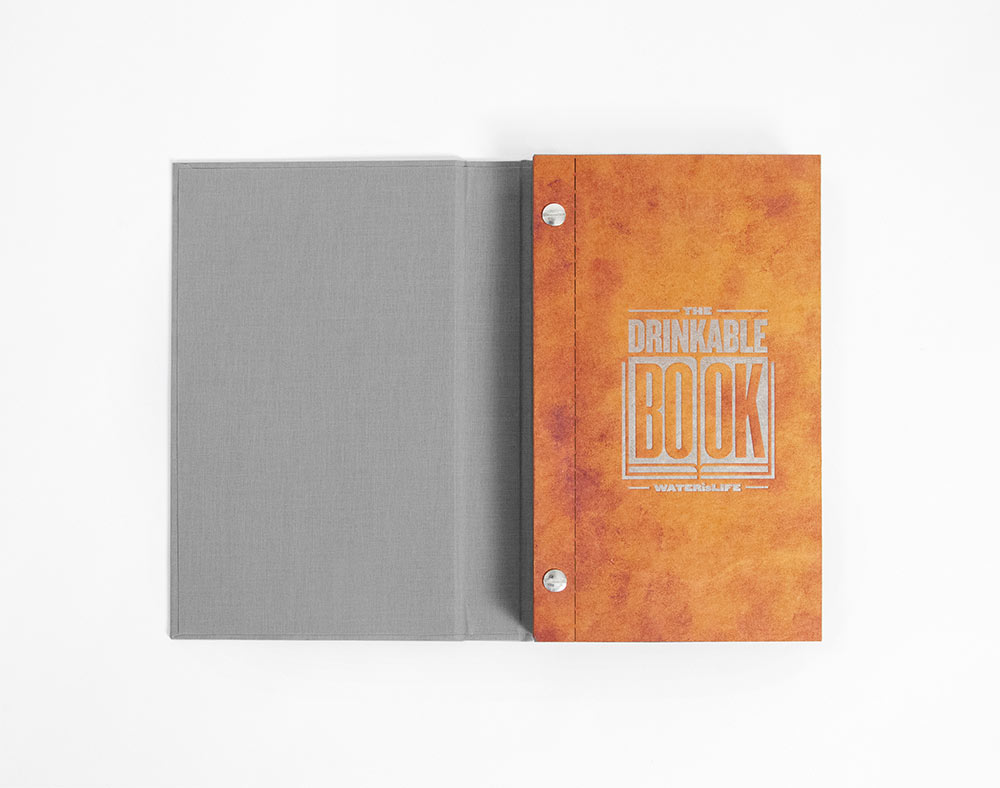
The method is creative and critical of each following step:
Step 1: tear out a pre-perforated page — each will filter 100 liters of water
Step 2: slot the page into the base of the custom filter box
Step 3: Replace the pressure plate and pour water through
Inspirations and book-form shaping:
Some of the inspired elements of my curatorial project came from ‘drinkable book‘ and found objects by John Cage. My interactive materials are strings, wires, small cards, beads, and cloths. How the audiences participate with their imagination or their stories relates to the materials they are chosen to present on their paper to create the ‘score’. The publication of this ‘scorebook’ also struggled for playing melodies on their method of found objects, such as glass, tables, bottles, forks, bowls, and a range of things you could find in the nature environments.
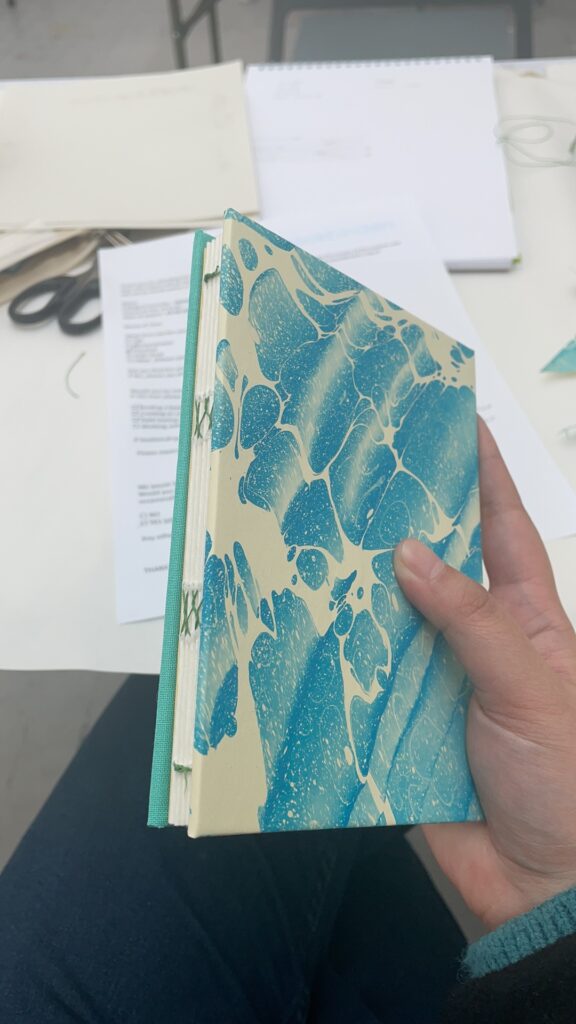 (String book)
(String book)
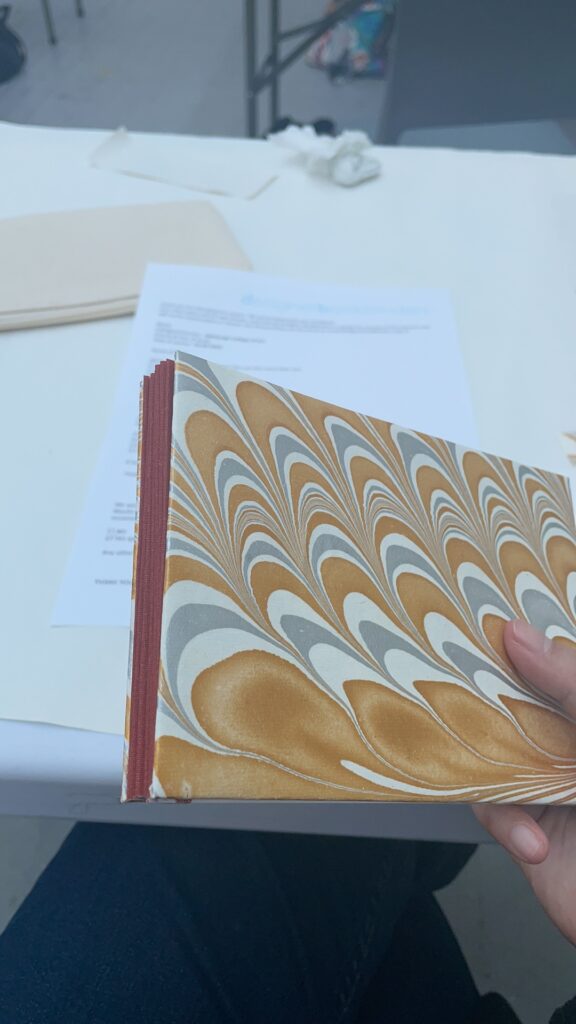 (Booklet)
(Booklet)
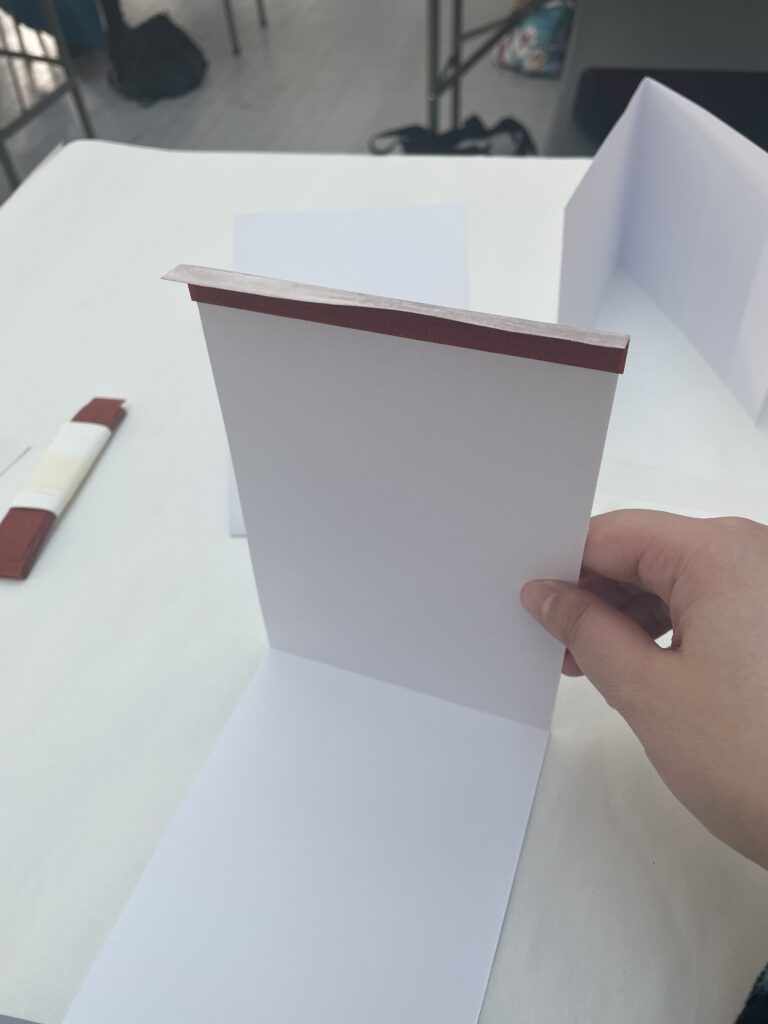 (Making process)
(Making process)
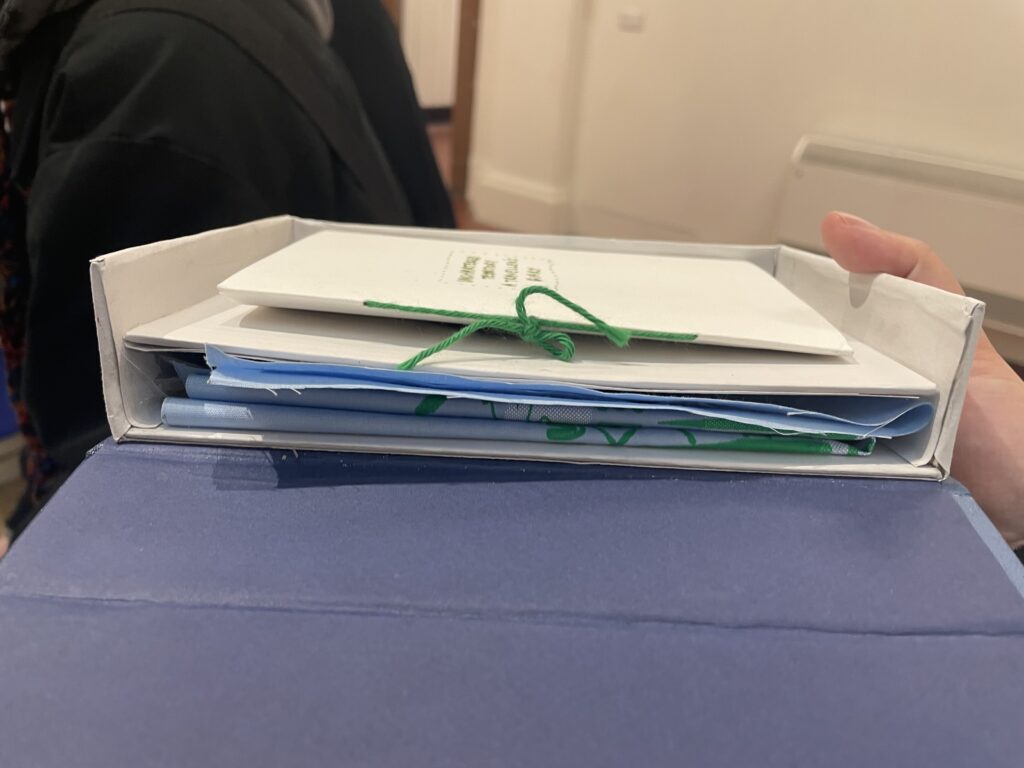 (Bookcase making)
(Bookcase making)
Critical reflections on the dilemma:
The dilemma between a form of workshop collections or a materialism of exhibition is confronting to me, I have looked into the range of materialism of exhibitions before contributing with efforts of sculptures, installations, and paintings or printmaking. I like to try some new forms that I never tried before, therefore, a processing collection of workshops as an open book-form is pushed me to move forwards.
The connections of materialism that fit into my ideas, the artists are exploring a diversity of new materials. In my project, a wider spectrum of objects found by my participants, I will provide them the same normal paper to write or draw their ‘score’. In addition, I also will prepare some stained paper, and different types of paper for their design for their own ‘score’ to make visuals or decorations. However, they also need to pay attention to the meaning-making of why they decide to make these decorations.
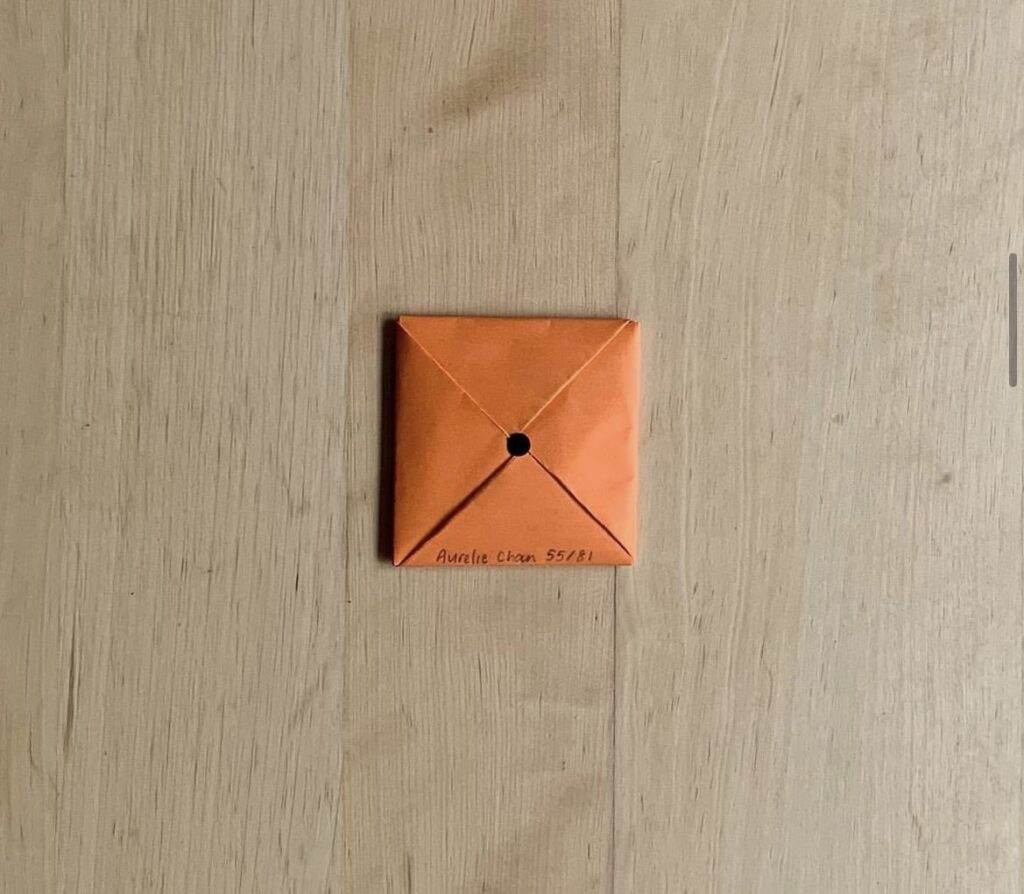 (Paper folding)
(Paper folding)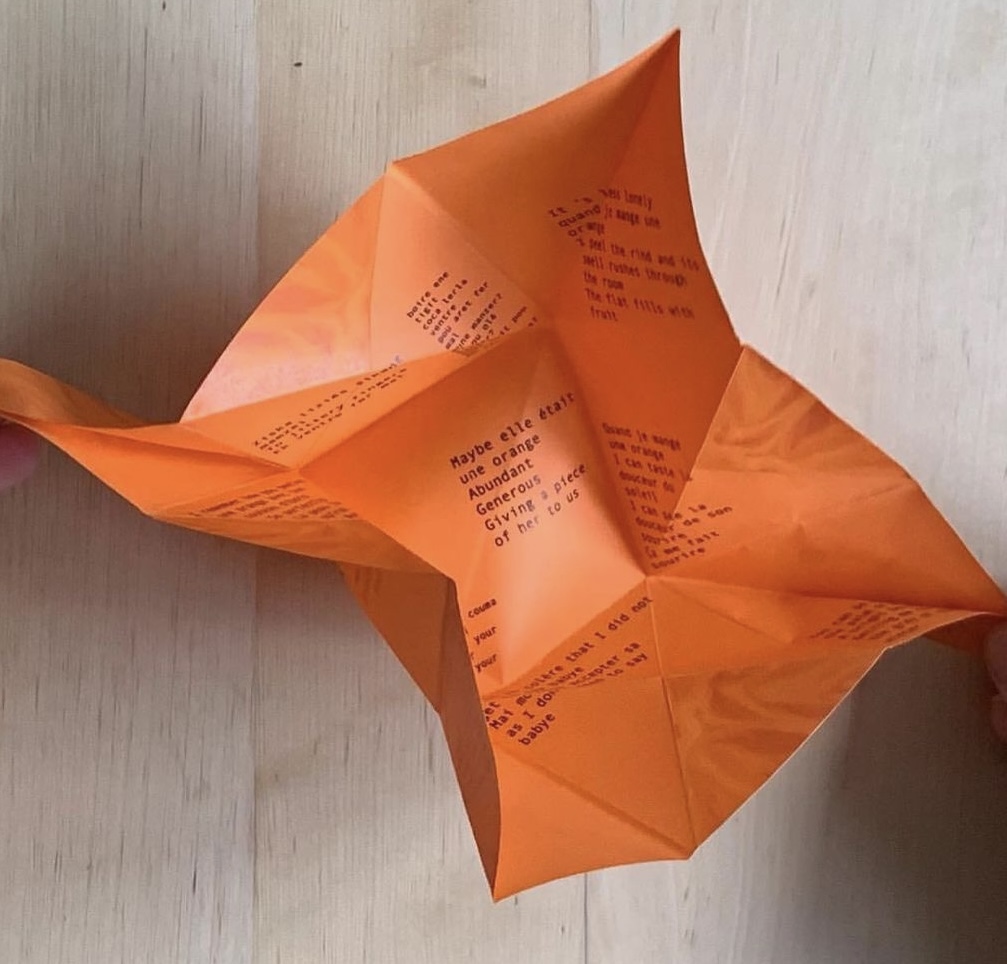 (Windmill shape)
(Windmill shape)
Work with the method of sketch or collage:
A good approach to design is sketches or collages, it is a useful brainstorming method to expand your thinking in visuals. The participants is free to choose what they like to write or sketch on the paper. For example, texts/languages, graphics/collages, symbols/formulas, pure colors/decorations, images/drawings.
 (Sketches and drafts)
(Sketches and drafts)
Exhibition book-form:
The examples are displayed in the exhibitions which indicated what the book-form looks like, and the methods to approach different types of book-making, such as printouts, booklets, string books, wire books, photograph books, print books, etc.
 (Exhibition book-form)
(Exhibition book-form) (Exhibition book-form)
(Exhibition book-form)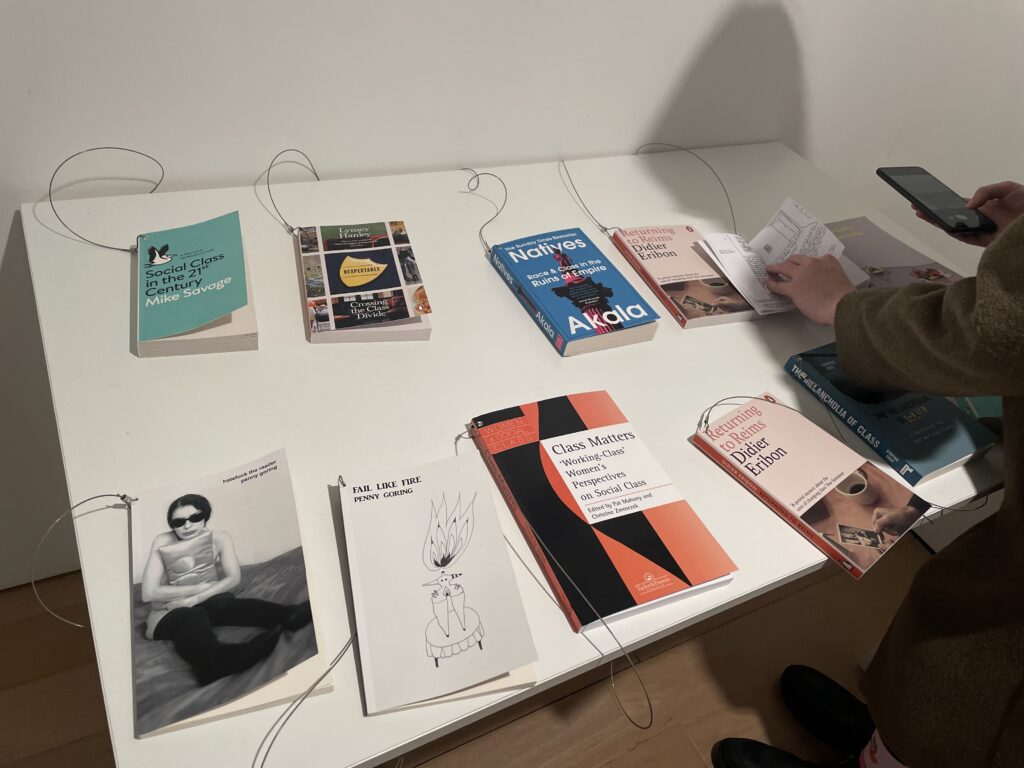 (Display of books)
(Display of books)
(The video of the flipbook)
References:
https://www.davidairey.com/the-drinkable-book



Leave a Reply